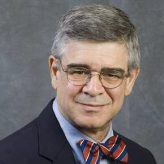President Joe Biden makes policies on hopes, prayers and dreams, like the cost of “Building Back Better” is zero, the promise that the Afghan army would hold, and at over at the Federal Reserve, inflation is transitory.
The Fed has decided to phase down monthly purchases of Treasury and mortgage-backed securities from $120 billion a month to zero by June and to keep the federal funds rate near zero at least until then. Economic conditions could warrant a change, but policy remains fairly loose.
Since February 2020, the Fed has created more than $4 trillion to help fund federal stimulus spending, and a lot of that money is still sitting in household savings accounts waiting to be spent. According to the current plan, Fed bond purchases will add another $420 billion and keeping short-term interest rates near zero should add still more.
Almost everywhere, the demand for goods exceeds supply, and inflation is rocketing. The Fed’s preferred measure of inflation, the personal consumption price index, is rising at the highest rate in years, and core inflation, which strips out food and energy, is up 3.6% from last year.

Image Source: Pexels
As part of a comprehensive policy review initiated before the pandemic, the Fed loosened the criteria for monetary policy to tolerate more inflation and place greater emphasis on wage and employment growth.
It established conditions for raising interest rates: Inflation has to rise to 2%; inflation is on track to moderately exceed 2% for some time, and that labor market conditions are consistent with maximum employment.
Clearly, the first condition has been met, but the Fed clings to the idea that the pandemic price surge is transitory and that labor markets are not tight.
Conditions have changed since the pandemic began, and businesses expect supply chain problems to persist long after it abates. The Conference Board’s most recent survey for twelve-month inflation expectations is 7%.
Thanks to union contracts, our railroads and ports are not as automated or efficient as ports abroad. Local rules in Long Beach, for example, prevent the facilities from working at maximum capacity. Throughout California, anti-business, nimby, and environmental regulations prevent the construction of much-needed warehouses and other facilities.
The shipping industry faces a chronic shortage of seamen and truck drivers. More generally, businesses have 10.4 million jobs open, while the ranks of the unemployed only number 7.4 million. Manufacturing and construction executives complain tirelessly about the lack of skilled applicants.
The Fed could point to the 531,000 new jobs created in October as evidence that the economy has not reached maximum employment. Still, it fails to grasp that in a growing economy, jobs are added even when labor markets are stressed.
Pandemic relief policies like the no-work-required Child Tax Credit checks, bigger food stamp allowances, rent assistance, and larger health Affordable Care Act subsidies literally tax the working, especially in two-income families.
They also depress the supply of labor unless wages rise robustly and fuel inflation.
Manufacturers and builders face all sorts of component and material shortages — it’s not just chips for cars — but for decades, wage-arbitrage, outsourcing and least-cost global production webs have been the buzz words.
Now CEOs want to make sure that they can deliver products and don’t want to shut down U.S factories and distribution for the lack of imported electronics components, chemical agents for paints or simply egg cartons for breakfast.
Onshoring is costly, and along with persistent labor shortages, this indicates inflationary pressures will be more acute after the pandemic than before when it started.
Biden administration policies to curtail oil pipeline construction and the development of fossil fuel resources are making motor fuels and natural gas to heat homes, plastics and chemical industry feedstocks and generate electricity more expensive. But those regulations hardly expand the availability of electric vehicles, new materials or windmills and solar panels for green energy.
Yet, Fed economists believe inflation will snap back to two percent, and the Fed policymakers cling to inflation as transitory narratives.
Fed Chairman Jerome Powell is up for reappointment, and the White House has made clear it wants an accommodative monetary policy. The new infrastructure program and social spending in the reconciliation bill will substantially add to excess demand for goods. And the Fed printing more money to enable large federal deficits — lest mortgage rates rise too much — will fuel more inflation.
The Fed’s more permissive criteria for raising interest rates have been met and ignored.
We can only conclude the Fed and its economists are captive to White House politics. As the stewardship of Arthur Burns in the 1970s demonstrates, we risk double-digit inflation before we are done.



